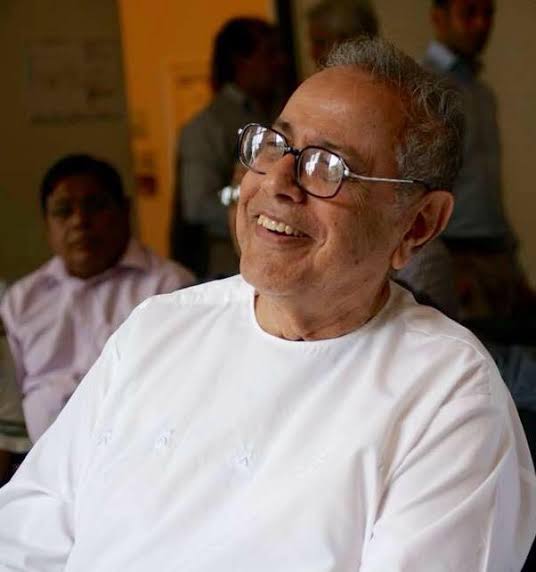My association with the doyen of Urdu theater, Habib Tanveer, is more than half a century old. I first met him back in 1962, at the opening ceremony of Tagore Theater in Chandigarh. He was invited with others, including Al-Qazi, Mulk Raj Anand, and Balwant Gargi. I was a lecturer in the English Department of the University, but I had even then a tall stature as an Urdu writer and a columnist in English. Dr. M.S. Randhawa I.C.S., the then Commissioner of Chandigarh, had nominated me as General Secretary of the Sahitya Academy.
I invited Habib the next day to give a lecture to my postgraduate students and he agreed. I remember he talked about Indian theater, in particular the Urdu version of it, to get out of the Parsi Theater tradition and reach the streets ‘where urchins play and bazaars where khwancha-wallahs sell their wares’. My students knew him from the fame that “Charandas Chor”, one of his seminal plays, had earned. Dr. Randhawa requested him to bring one of his plays to be staged in Tagore Theater, all expenses paid, and he agreed to bring Agra Bazaar.
The team came to the town and stayed in the University guest house while Habib was my personal guest at my humble abode on the campus. The play had already won acclaim when it was staged at Jamil Milia Islamia’s makeshift stage in Delhi. Those who are aware of Nazeer Akbarabadi’s نظیر اکبر آبادی poems, (Akbarabad is the other name for Agra!) would know that his verse is nearer to earth than to the classical mould of the ghazal tradition.
Habib Tanveer, consciously or unconsciously, cultivated an angry image – and lived up to it. At my behest, he chose to present one of Shakespeare’s plays, “A Midsummer Night’s Dream” with the Hindi title “Basant Ritu ka Sapna” بسنت رُت کا سپنا and an Indian setting and dialogues culled from Indian folklore. (This was an exception to his “angry image”. My humble contribution was a bit of dialogue as he had discussed the Shakespearean play with me in detail. (The play was prescribed in our M.A,. Part I syllabus and I was teaching it as a classroom text.) Another adaptation was “Aik Aur Dronacharaya ” wایک اور دروناچاریہ which became an instant success. The Chattisgarhi plays and his Hindustani plays have an admixture of Urdu, Hindi, and the local lingo of that area.
It was just by chance that I was in Chandigarh some years back when I came to know that he was to bring his play “Rajrakt” to the Tagore Theatre. Indeed, it was a God-given chance for me and I postponed my flight from Delhi to London by a week to be able to meet him, talk to him, and to watch his play.
He met me – the same old pipe-smoking angry intellectual. However, his native genius had acquired a kind of sheen or finesse because of his training at the Royal Academy of Dramatic Arts, his direction at Bristol Old Vic Theatre School, and the influence of Bertolt Brecht on him. No longer was the simple approach of Charndas Chor or Urdu satirical description of the bazaar life of Nazeer Akbarabadi came to the surface of his plays.
What I saw in this play, which was created out of Tagore’s works, was a really angry, much angry old man, who could transcend his original ‘simple’ self into a ‘complex’ one. He had elaborated upon the play, letting his audience into its scene-by-scene account, but what he had lost in the process was the art of crisp sound-bytes which were missing.
Back in Bhopal for his “Naya Theatre”, he wrote “Gaon ka Naam”, “Kamdeo ka Apna”, “Mora Naam Damad”, and “Sasural”. گاؤن کا نام، کام دیو کا اپنا، مورا نام داماد، اور سسرال ۔۔
His autobiography in Urdu, “Matmaili Chadarya” مٹ میلی چدریا has been left incomplete because of his demise after only a 3-week long illness. The title is derived from Bhagat Kabir’s “Jheeni Chadarya” بھگت کبیر کی جھینی چدریا (Kabir, one of the greatest saint poets in Hindi was a cloth weaver by profession!). It might reveal a lot about him but, I must say, that his personality and genius can only be culled from his plays.
I lost touch with him and I don’t know whether his wife and work-mate Monika Mishra مونیکا مشرا is alive, but his daughter Nagina نگینہ who is a talented singer is well known in India. I wish I had gone to meet him when I was in India in May this year, but it was not to be. Bhopal, after Kausar Chandpuri’s کوثر چاند پوری passing away and my adopted sister Shafeeqa Farhat’s شفیقہ فرحت death, has become a city which is more or less شہر خموشاں (city of graveyards) for me now.



